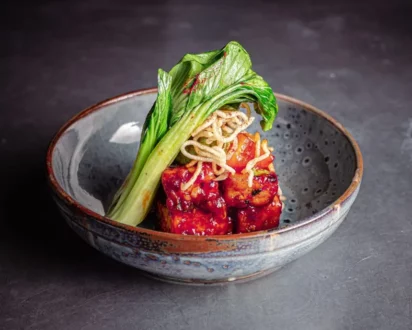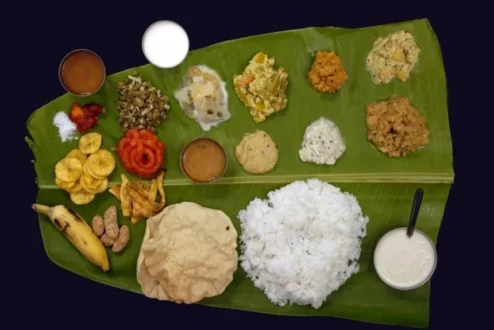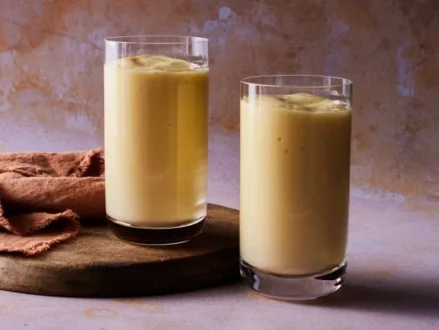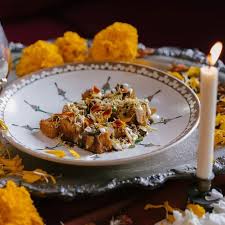Exploring Regional Indian Cuisines in Southeast Asia: From Punjabi to South Indian Delights
Indian cuisine is incredibly diverse, shaped by centuries of culture, geography, and climate. When you explore Indian food across Southeast Asia, you’ll find this rich variety beautifully reflected in the many restaurants and street food stalls across Thailand, Malaysia, Singapore, and beyond. From the hearty, robust flavors of Punjab in northern India to the fragrant, spicy delicacies of South India, regional Indian cuisines have greatly influenced the food scene in Southeast Asia.
Punjabi Cuisine: Bold Flavors and Hearty Classics

Punjabi food is famous for its rich, creamy gravies, tandoori breads, and flavorful meat dishes. In Southeast Asia, dishes like butter chicken, dal makhani (slow-cooked lentils), and sarson ka saag (mustard greens curry) have become beloved staples, often adapted slightly with local ingredients but maintaining their characteristic boldness. Some of the top Indian Restaurants in Bangkok and Kuala Lumpur attract both Indian expatriates and locals who crave satisfying, comfort food with deep flavors and spices.
South Indian Cuisine: Light, Spicy, and Vegetarian-Friendly

Moving south, Indian cuisine changes significantly. South Indian food relies heavily on rice, lentils, and coconut, creating meals that are lighter yet packed with flavor. Popular dishes such as dosa (crispy rice crepes), idli (steamed rice cakes), sambar (lentil stew), and coconut chutney are widely enjoyed throughout Southeast Asia, particularly in areas with Tamil and Malayali communities. These dishes offer a perfect balance of spicy, tangy, and savory flavors, making them popular among vegetarians and those seeking gluten-free options.
The Broader Influence: Regional Diversity Meets Local Tastes
Beyond the north and south, India offers a vast array of regional cuisines—like the fiery curries of Andhra Pradesh, the sweet and savory dishes of Bengal, and the unique spice blends of Gujarat. These diverse flavors have all found their way into Southeast Asia’s culinary landscape, enriching the variety of Indian food available to enthusiasts and newcomers alike.
Indian spices such as cardamom, cumin, turmeric, and fenugreek have also become essential in many Southeast Asian dishes and including the best restaurants in Bangkok, illustrating a shared culinary heritage. Indian cooking techniques and ingredients have blended with local flavors to create exciting fusion dishes that celebrate the region’s cultural connections.
Whether you’re drawn to the creamy richness of Punjabi curries or the vibrant spice of South Indian meals, exploring regional Indian cuisines in Southeast Asia offers a flavorful journey into tradition and innovation. It’s a delicious reminder of how food can connect people across cultures and borders.
How Indian Spices Are Shaping Southeast Asian Cuisine
ndian spices have long been prized not only in India but across the world for their powerful aromas, vibrant colors, and health benefits. In Southeast Asia, their influence runs deep, shaping the flavors of regional cuisines in countries like Thailand, Malaysia, and Singapore. From fiery curries to fragrant rice dishes, Indian spices have become integral ingredients, blending seamlessly with local herbs and techniques to create unique and beloved flavors.
The Spice Trade and Historical Connections

The presence of Indian spices in Southeast Asia dates back centuries, thanks to historic trade routes and cultural exchanges. Indian merchants brought not only spices but also culinary knowledge, religious practices, and art to the region. Spices like turmeric, cumin, coriander, and cardamom traveled alongside Buddhist and Hindu traditions, finding fertile ground in local kitchens.
These spices were quickly embraced, often mixed with native ingredients such as lemongrass, galangal, and kaffir lime leaves. The fusion of Indian and Southeast Asian flavors reflects the long-standing connections between the regions and continues to evolve with modern culinary creativity.
Key Indian Spices and Their Impact on Southeast Asian Dishes

Turmeric, known for its vibrant yellow hue and earthy flavor, is a staple in many Southeast Asian curries and rice dishes. It not only adds color but also offers anti-inflammatory benefits that have made it a valued ingredient in traditional medicine.
Cumin and coriander seeds contribute warm, nutty undertones found in Malaysian rendang and Singaporean spice blends. These spices complement the rich coconut milk bases common in the region’s cooking.
Cardamom and cloves add aromatic depth to desserts and savory dishes alike. For example, Singapore’s iconic biryani rice reflects Indian Mughlai influences, showcasing cardamom pods simmered with fragrant basmati rice and tender meat.
The widespread use of Indian spice blends, like garam masala and curry powders, has also inspired local versions. Malaysian and Thai spice pastes often include Indian-origin spices combined with native chili and herbs, resulting in complex layers of flavor.
Culinary Fusion and Cultural Exchange Today
Today, Indian spices continue to shape Southeast Asian cuisine through home cooking, street food, and high-end restaurants. Food markets in Bangkok, Penang, and Singapore offer dishes that marry Indian spices with local ingredients—such as Thai yellow curry, Malaysian laksa, and Peranakan cuisine—all rich in aromatic spices that trace back to Indian roots.
Chefs and home cooks alike experiment with these spices, crafting fusion dishes that honor tradition while celebrating innovation. The blending of Indian and Southeast Asian flavors highlights a shared culinary heritage that connects people through taste and history.
In conclusion, Indian spices are much more than seasonings in Southeast Asia—they are living symbols of cultural exchange and creativity. Their bold flavors enrich every meal, bringing warmth, depth, and a story of centuries-old connections to the table.
Pairing Indian Food with Local Southeast Asian Drinks: Tea, Lassi, and More
Indian food is celebrated for its bold spices, complex flavors, and vibrant textures. To fully enjoy these dishes, the right beverage pairing is essential. In Southeast Asia, where Indian cuisine thrives alongside rich local drink traditions, the fusion of flavors extends to the drinks menu as well. Whether it’s a cup of spiced Indian chai or a cooling Thai iced tea, pairing Indian food with complementary beverages enhances the dining experience and balances the palate.
Classic Indian Pairings: Chai and Lassi

No discussion of Indian food pairings is complete without mentioning chai—India’s famous spiced tea. Brewed with black tea leaves, milk, sugar, and warming spices like cardamom, cinnamon, and ginger, chai is the perfect companion to savory Indian snacks and meals. Its sweet, aromatic profile balances spicy dishes such as samosas, pakoras, and biryanis, helping to soothe the palate while amplifying the meal’s richness.
Another iconic Indian beverage is the mango lassi, a smooth yogurt-based drink flavored with ripe mangoes and sometimes a hint of cardamom or rose water. Lassi’s creamy texture and subtle sweetness offer a refreshing contrast to spicy curries and tandoori dishes, cooling the mouth and aiding digestion. Variations include salted lassi or rose-flavored versions, each adding a unique twist to the classic pairing.
Southeast Asian Drinks That Complement Indian Flavors
Southeast Asia offers its own array of flavorful beverages that pair wonderfully with Indian cuisine. In Thailand, Thai iced tea—made with strong black tea, condensed milk, and sugar—is a popular choice. Its creamy sweetness balances the heat and spices found in Indian dishes, making it a favorite accompaniment at many Indian restaurants.
In Malaysia and Singapore, bandung, a rose-flavored milk drink, provides a floral, sweet contrast to spicy fare. Similarly, lemongrass tea and pandan water, both traditional herbal infusions, offer light, aromatic refreshment that complements the intensity of Indian spices without overpowering them.
For those seeking a cooler, more hydrating option, coconut water is widely enjoyed across Southeast Asia. Its natural sweetness and electrolyte content make it an ideal drink to offset the warmth of Indian spices, providing balance and hydration during a hearty meal.
Creative Fusion: Modern Pairings and Cocktails

Modern chefs and mixologists in Southeast Asia are experimenting with innovative drink pairings that blend Indian and local influences. For example, cocktails infused with Indian spices like cardamom or ginger combine with tropical fruits native to the region, creating unique beverages that enhance Indian dishes in new ways.
Tea bars and cafes often serve spiced chai lattes alongside Thai milk teas, giving diners a chance to explore both traditions. Smoothie bars may offer mango lassi-inspired drinks with a Southeast Asian twist, adding ingredients like durian or jackfruit for an adventurous flavor experience.
In conclusion, pairing Indian food with local Southeast Asian drinks creates a delightful harmony of flavors. Whether you stick to traditional chai and lassi or venture into Thai iced teas and herbal infusions, these beverages bring out the best in Indian cuisine while celebrating the region’s diverse drink culture.
